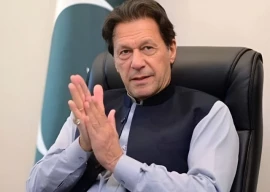
The prime minister said that if the people of Bahawalpur launched a movement calling for granting provincial status for the district, the government would be open to their demands, though he emphasised that any change would have to comply with constitutional constraints.
This is not the first time the prime minister has expressed openness to the idea of newer provinces being created out of Punjab, though the first time he has spoken about the possibility reviving Bahawalpur’s provincial status, which it had from its accession to Pakistan in October 1947 until it was integrated into the West Pakistan province in October 1955.
On January 25 last year, Gilani told a group of supporters in Multan that the government was open to the creation of a Seraiki province in southern Punjab. However, he was cautious in pointing out that the Constitution requires a two-thirds majority of parliament to vote for the creation of a new province, a level of support which the PPP-led coalition does not have.
The more welcoming response of the prime minister to the idea of new provinces stands in contrast to the vehement opposition by the Pakistan Muslim League- Nawaz (PML-N) to the idea of creating new provinces out of Punjab. The PML-N currently holds a majority in the Punjab Assembly and Shahbaz Sharif, one of the leaders of the party, serves as the provincial chief minister. The PML-N has historically drawn more support from the northern areas of Punjab than the southern areas of the province.
The Pakistan Peoples Party (PPP) has been supportive of decentralising governance from Islamabad towards provinces during its current term. The party led the passage of the Eighteenth Amendment to the constitution which enhanced the powers of provincial governments. It also gave the Northern Areas of Pakistan more autonomy and renamed the region Gilgit-Baltistan.
(additional input from farooq tirmizi in karachi)
Published in The Express Tribune, February 22nd, 2011.
1732521023-0/biden-(1)1732521023-0-405x300.webp)
1732520496-0/BeFunky-collage-(86)1732520496-0-165x106.webp)
1732519472-0/lamar-(3)1732519472-0-165x106.webp)
1732519298-0/BeFunky-collage-(85)1732519298-0-165x106.webp)

1732522586-0/Copy-of-Untitled-(80)1732522586-0-270x192.webp)
1732515558-0/Copy-of-Untitled-(76)1732515558-0-270x192.webp)










COMMENTS (17)
Comments are moderated and generally will be posted if they are on-topic and not abusive.
For more information, please see our Comments FAQ